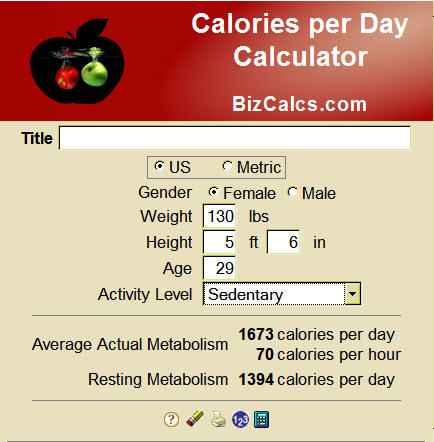

Taking this into consideration, it is more feasible to cut back on food since daily caloric requirements for maintaining weight are much higher. So keeping that in mind, the goal is to lose 1-2lbs per week.įor sedentary individuals, it would be recommended to set a goal of losing 1lb per week, which would equate to a calorie deficit of 500 calories/day.įor more active individuals, daily calorie requirements are higher in order to account for exercise and active lifestyles. More often than not, when weight loss exceeds 2lbs in a week, the majority of that is water loss. That would equate to a calorie deficit of 1,000 calories per day. See this blog on How Many Carbs Per Day for Weight Loss to learn more.įor healthy, sustainable weight loss, it is generally not advisable to lose more than 2 pounds of fat per week.

Step 2: Divide answers in step 1 by 4 since there are 4 calories per 1 gram of carbohydrate Multiply daily calorie requirements by 0.45 & 0.65 to obtain calories from carbohydrates. Step 1: Calculating grams of carbohydrates. The Dietary Guidelines for Americans recommends that carbohydrates should make up 45-65% of one’s daily calories. Third: Calculate Daily Carbohydrate needs See this blog on How Much Fat Per Day for Weight Loss to learn more. Using both of these references you can calculate your daily fat needs:
The Dietary Guidelines for Americans also recommends fat should make up 20-35% of one’s total daily calories. To prevent any fatty acid deficiencies it is recommended to consume at minimum 1g/kg of fat per day. Multiply weight in kilograms by range that best fits your activity levels. Whatever you're looking for to maximize your weight training sessions, you'll find it on our list of the best fitness trackers for weight training.This is the last step of calculating calories, and it's one that's absolutely essential for getting accurate weight loss results.ĭid you know that protein is a huge catalyst for weight loss and hunger satiation? Let's compare and contrasts sedentary versus moderately active individuals and their protein requirements.įor sedentary/lightly active individuals: 1-1.2g/kg/dayįor moderately active - extremely active: 1.4-2.2g/kg/dayĬonvert body weight in pounds to kg’s (round to the nearest 10th) If you want to treat yourself and splurge, we recommend the Apple Watch 5 because it offers a ton of high-tech smart features and will effectively monitor and record your weight training workouts. We also like the Atlas Wearables Wristband because it counts your reps for you, so you don't have to. We love the Beast Athlete because it was designed specifically for weight training and will give you metrics in real-time, so you know how much you are pushing rep by rep on your smart screen.
One of the best ways to optimize your workouts is with a fitness tracker that possesses the ability to recognize your strength training workout, count your reps, and give you the metrics you need to get the most out of your workouts and improve your strength over time. We understand the need to make the most out of your weight training routine. Our team of Apple experts have years of experience testing all kinds of tech and gadgets, so you can be sure our recommendations and criticisms are accurate and helpful.


 0 kommentar(er)
0 kommentar(er)
